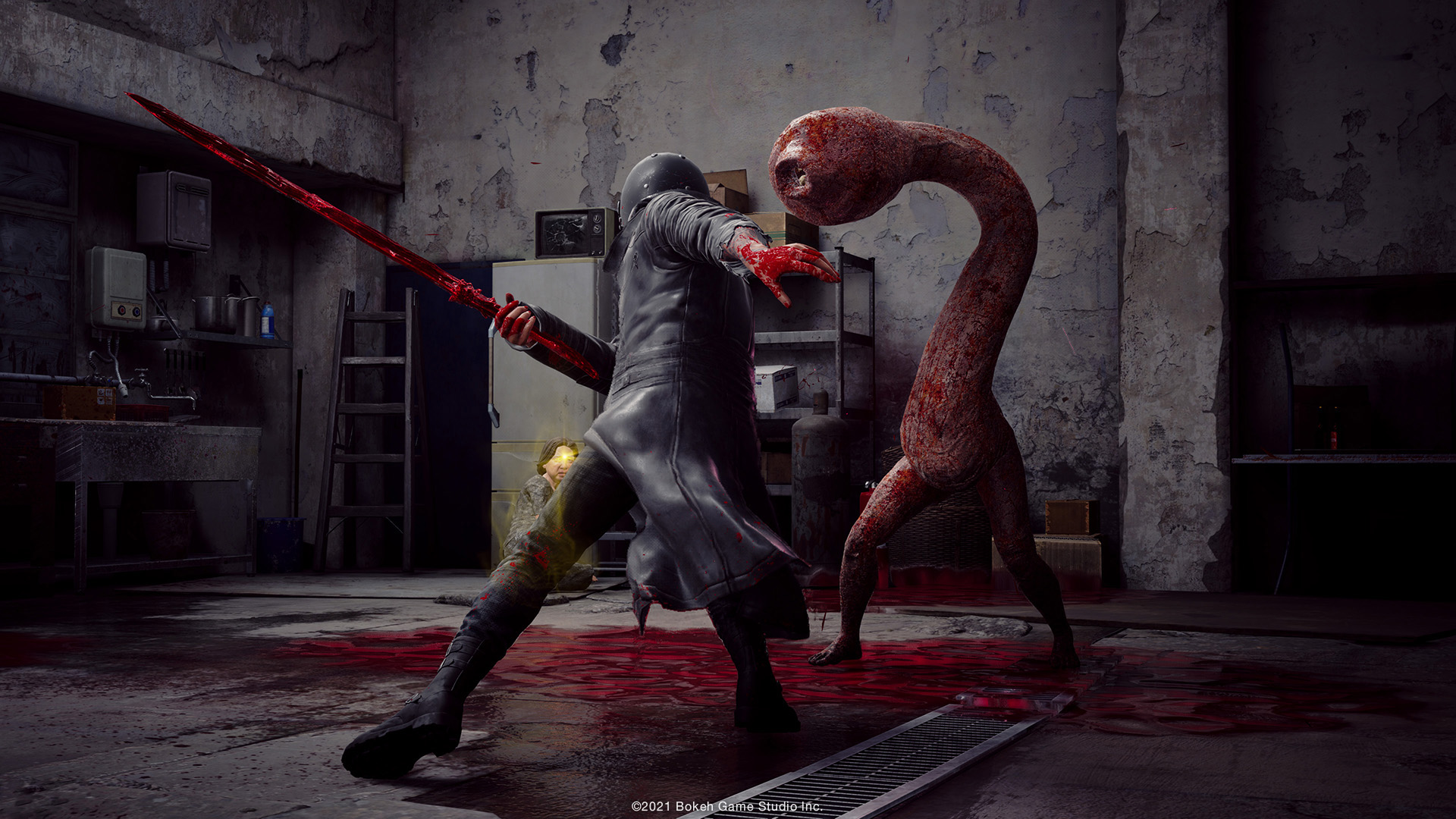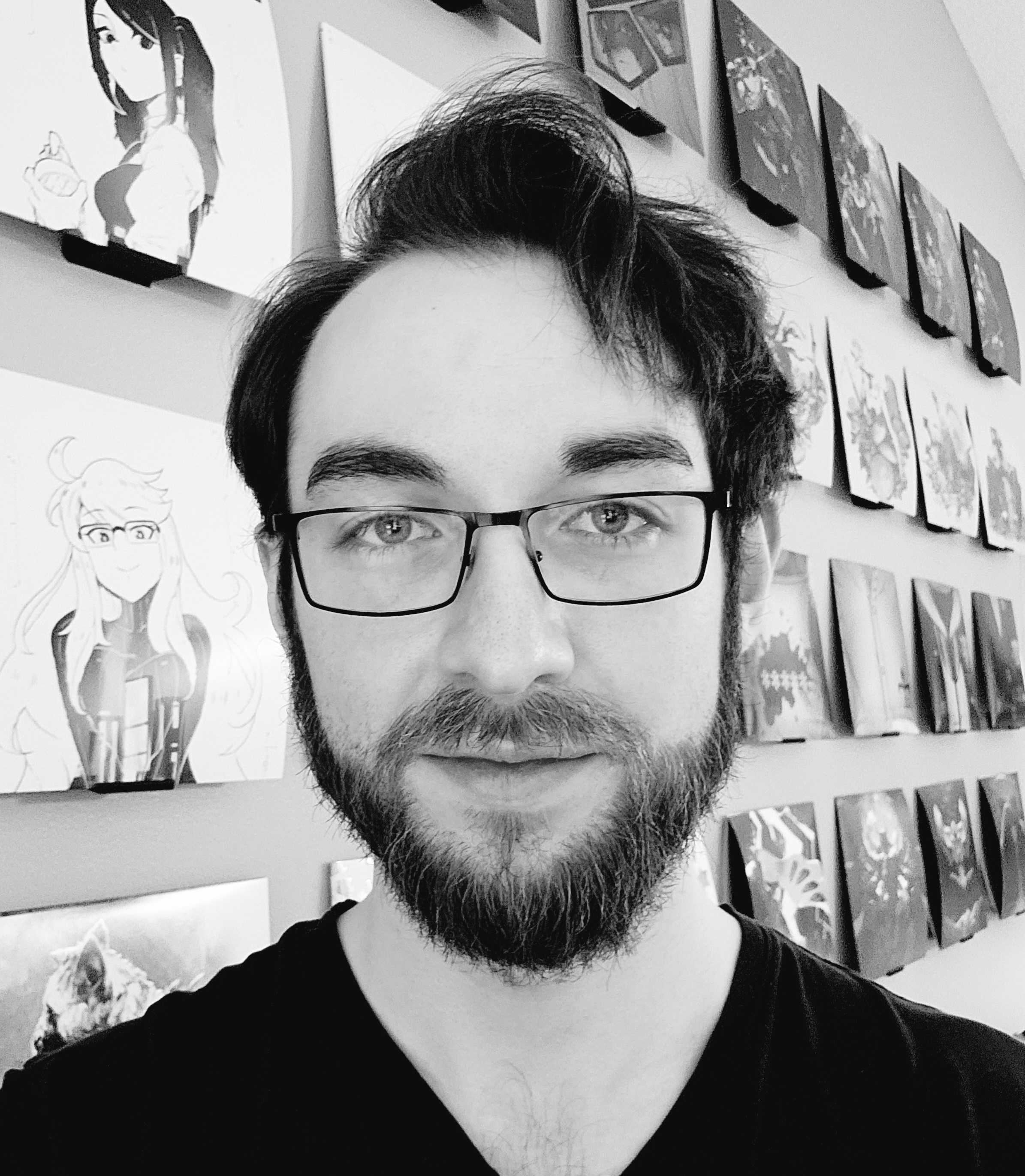Silent Hill creator's new action horror game Slitterhead is a rare breed that's exciting to see: mission-based, manga-inspired, and weird as it is bloody
Preview | More action than horror, Slitterhead is a whole game built around swapping bodies

Slitterhead, the latest game from Silent Hill and Gravity Rush creator Keiichiro Toyama, now at his own studio Bokeh, is somehow even weirder than it looks. An accidental reveal ahead of Summer Game Fest showed off a game about jumping between bodies and fighting fish- or insect-like skinwalkers as a paranormal mystery simmers in the background. Extended hands-on time at the event proper reveals a game that's bigger on action than expected, plays better than that trailer suggested, and feels refreshingly focused besides.
This was not the smoothest or most satisfying action game I played at SGF – that badge probably goes to Black Myth: Wukong – with some choppiness in animations and the camera disrupting game flow. But it is mechanically solid enough to prop up the ideas that actually make it stand out. Slitterhead doubles down on its central mechanic, swapping bodies via possession, to a rare degree.
Summer Games Preview
We're diving into the hottest upcoming games out of Summer Game Fest. To find all of our hands-on reports, visit GamesRadar's What's Hot 2024 hub.
New body, who this

You start as a confused spirit possessing a dog, following scent trails in search of, well, something. Soon you're rapidly jumping between the unlucky citizens of Kowlong, a fictional 1990s Asian city, slowly feeling out what it means to be... whatever you are. I asked Toyama what type of city he was envisioning, and he said (via interpreter) that he wanted to convey nostalgia for "chaotic" cities, places filled with people and problems and flickering street lights and colorful signs and dingy alleys. "I'm impressed with how people go about their ordinary lives in that kind of setting," he says.
Possession is the answer to almost everything in Slitterhead. Can't reach that ledge? Possess someone a few floors up. Need to get off this building? Jump off, slow time right before you reach the ground, and then jump to a new body before yours becomes a pancake on the concrete griddle. You can briefly hover outside your current host to sense nearby people, too, which has some exploration implications. I'm told there are some non-human options, but despite starting as a dog, you'll mostly be possessing people.

This carries over into combat as well, a third-person melee-parry sandwich glued together with blood and bodies. When you possess someone, you get a powerful damage boost for a few seconds, plus you can instantly perform a gap-closing attack on whatever you're targeting, so you want to swap all the time. If your host dies, you'll lose one of your three lives and inch closer to a game over, so you also want to jump out before a fatal attack connects. The clutch slow-mo escapes this dynamic creates are quite fun. Naturally, you want as many potential hosts around as possible, so you can't just leave people to die. You'll want to soak up any nearby blood to heal yourself between jumps.
The idea is to win with numbers rather than raw power, though there are special, stronger characters who are more permanent story additions and better fighters who can support longer duels. These characters eventually form something of a loadout system, letting you choose who to bring with you on most missions and what active or passive skills to equip. That's right, folks: honest-to-god missions. There are some secret bosses and side quests, but Toyama, seated on the couch near me during my demo, stressed that this is a pretty linear game. I couldn't be happier to hear it. Not every game has to be massive, and frankly too many games are. Give me a shot of creativity that doesn't overstay its welcome and I'm on the hook.

Your melee attacks are, at first, fittingly wimpy for someone – rather, something – struggling to puppeteer random old folks and couriers and jaywalkers. Eventually you start to find a rhythm and swing bloody maces and swords with more oomph. Defending mostly boils down to a directional parry system: hold the block button, then flick the analog stick in the highlighted direction of an incoming attack at the last moment. Do it right and you can sneak in a counter. I never quite got fully comfortable with this system, speaking as someone who's landed a zillion parries in about as many action games, but in a way that made me want to play Slitterhead more, not put the game down in frustration.
Sign up to the GamesRadar+ Newsletter
Weekly digests, tales from the communities you love, and more
Abilities like poison needles or mind control group attacks spice things up, but the bread and butter is changing bodies, getting in some free hits while trying to attack from behind for extra damage, and then changing again. Toyama says Slitterhead was partly inspired by seinen manga, and I'm reminded of those scenes in some action series like Hellsing where fighters move faster than the eye can perceive and hit from multiple directions at once back-to-back-to-back.
Less survival horror, still horrifying

The titular Slitterheads possess people just like you, but where you keep a fairly normal appearance and fight with weapons and abilities forged from blood, these things conjure up some truly hideous forms. A woman runs at you with a nest of maggots for a head, a long, thin tongue slurping revoltingly down to the ground. The limbs and head of a blue ring octopus erupt from some poor citizen's ribcage.
One boss I encountered in a later mission, toward the end of my hour-long demo, is what I can only describe as a praying mantis Necromorph with some poor naked soul dangling from its torso. Bipedal lampreys – really just two legs and a long neck barely supporting a toothy mouth – pop up all the time, totally nude and all-too-proudly displaying tiny, terrible butts. It goes without saying that I immediately asked Keiichiro Toyama why these things have tiny, terrible, butts. He laughed and said, "It was just a personal choice. Like with seinen manga, they aren't just terrifying, they're kind of funny in a way, you laugh through it."
If you come into Slitterhead hoping to be scared out of your wits, I think you'll be disappointed. There's a horror veneer here, and some truly disturbing creature designs, but it takes a backseat to action as well as an air of mystery that I find absorbing in its own right. Toyama explained that this is partly because survival horror games can have a narrower audience, and with this game he wanted to open up his style to more players.
The tighter nature of Slitterhead, meanwhile, was partly born of its smaller budget and team, but Toyama embraces this as an impetus to leverage rather than a problem. The result is an endearingly odd game that quickly made a fan out of me. The action is a bit messier than I'd like, but it is a type of jank that I adore, and so far Slitterhead strikes me as a straightforward, inventive action horror game that knows exactly what it wants to be and chases that strange idea with admirable focus.
–
Slitterhead is set to release for PS4, PS5, Xbox Series X, and PC on November 8. If you're interested in everything the creator's had a hand in, from Snatcher to Silent Hill to Siren, be sure to check out the collected works of Keiichiro Toyama.

Austin has been a game journalist for 12 years, having freelanced for the likes of PC Gamer, Eurogamer, IGN, Sports Illustrated, and more while finishing his journalism degree. He's been with GamesRadar+ since 2019. They've yet to realize his position is a cover for his career-spanning Destiny column, and he's kept the ruse going with a lot of news and the occasional feature, all while playing as many roguelikes as possible.



